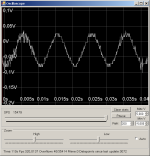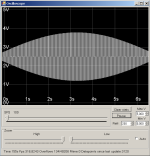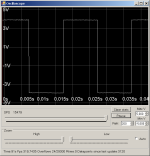How does it work?
The brains of the oscilloscope is a Microchip PIC18F2550 microcontroller,
which does the analog to digital conversion. It also buffers the results and sends the results to the host computer running the
oscilloscope software. The microcontroller firmware has been written using C and the PC software has been written with
C#.
The project uses the same PCB and the same firmware with my other USB project, the
USB moodlight.
Downloads
- Firmware running on the microcontroller. A MPLAB 7.51 project containing
the sources and the compiled .hex binary. (Also for the moodlight project.)
- Software running on a computer. A Visual Studio 2005 project containing the
sources and compiled binaries. (Also for the moodlight project.)
- PCB file to be used with the ExpressPCB software.





